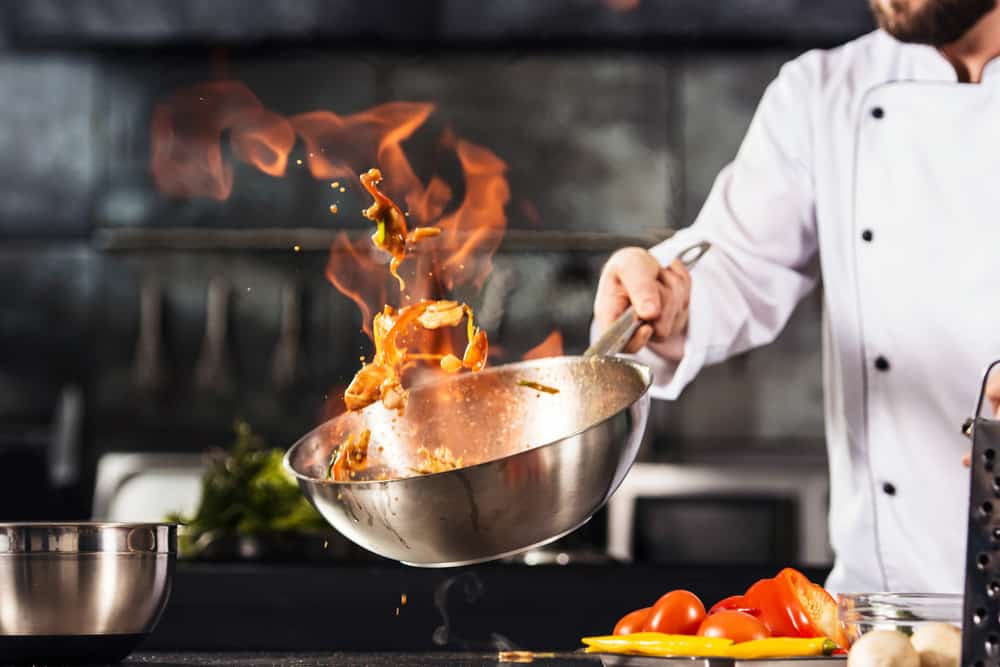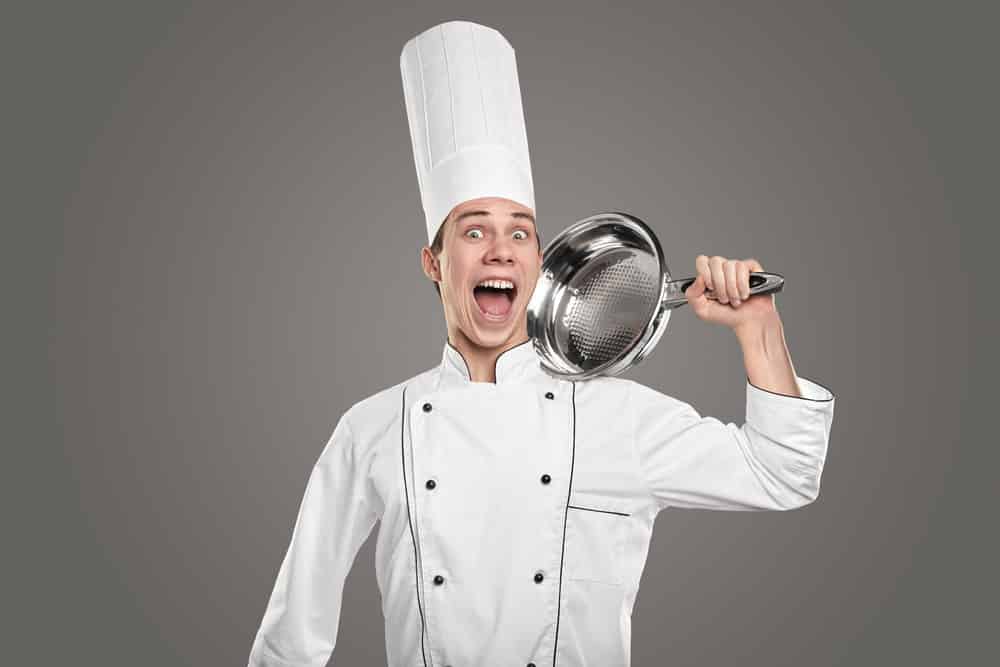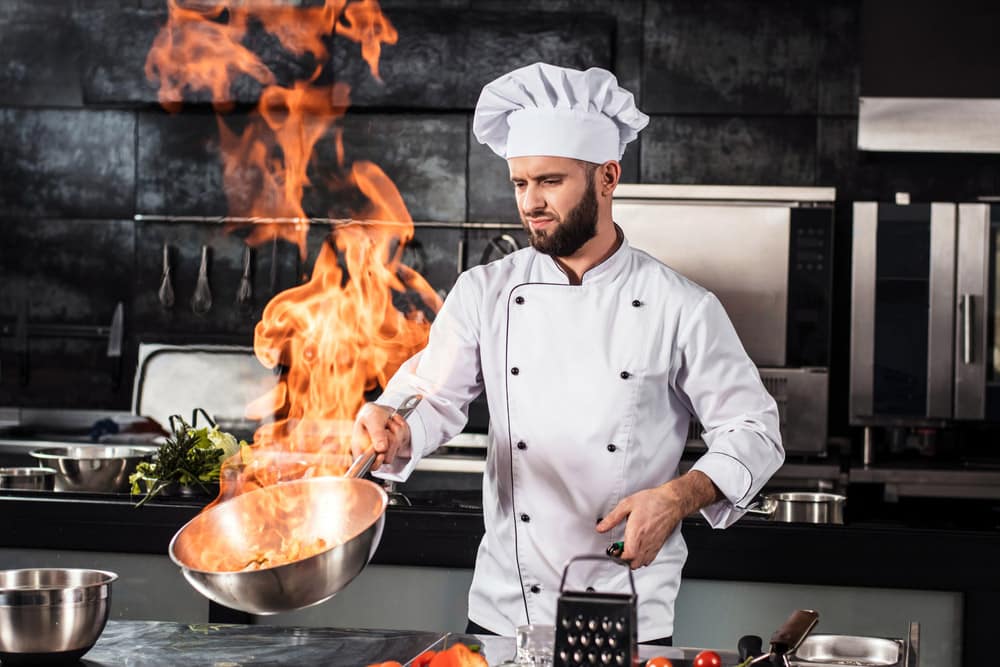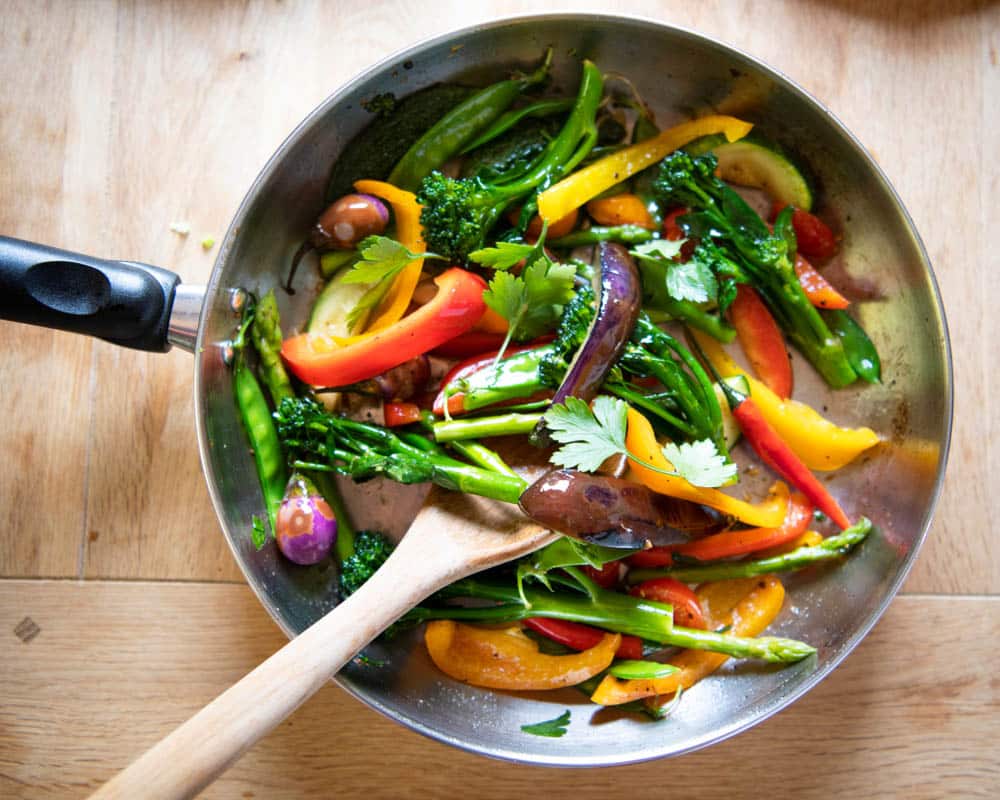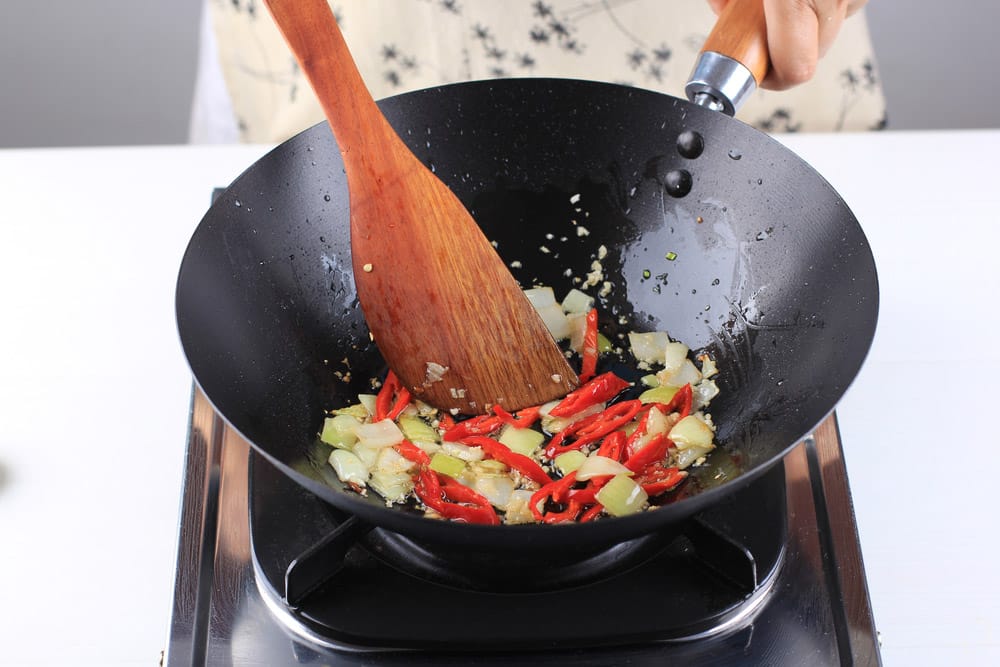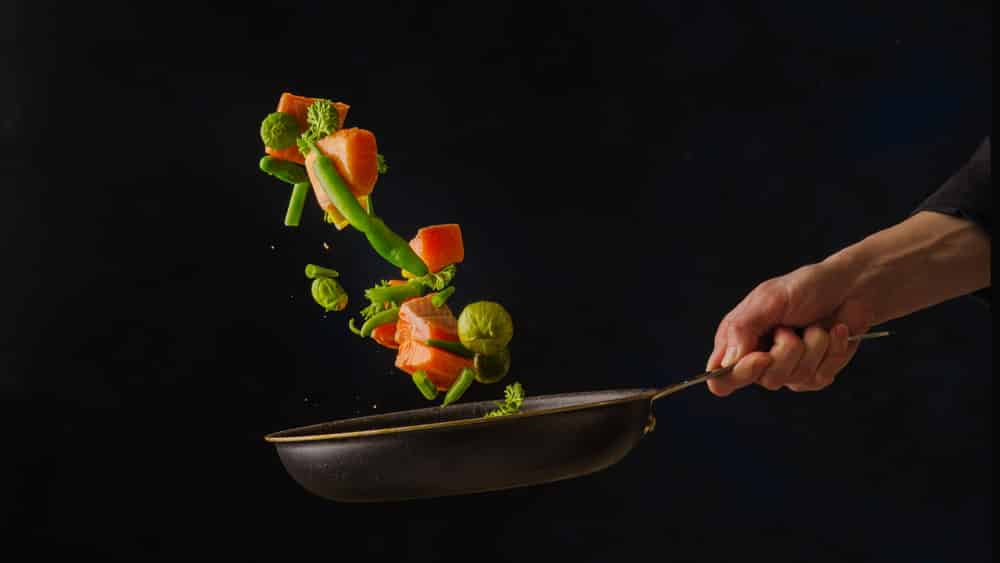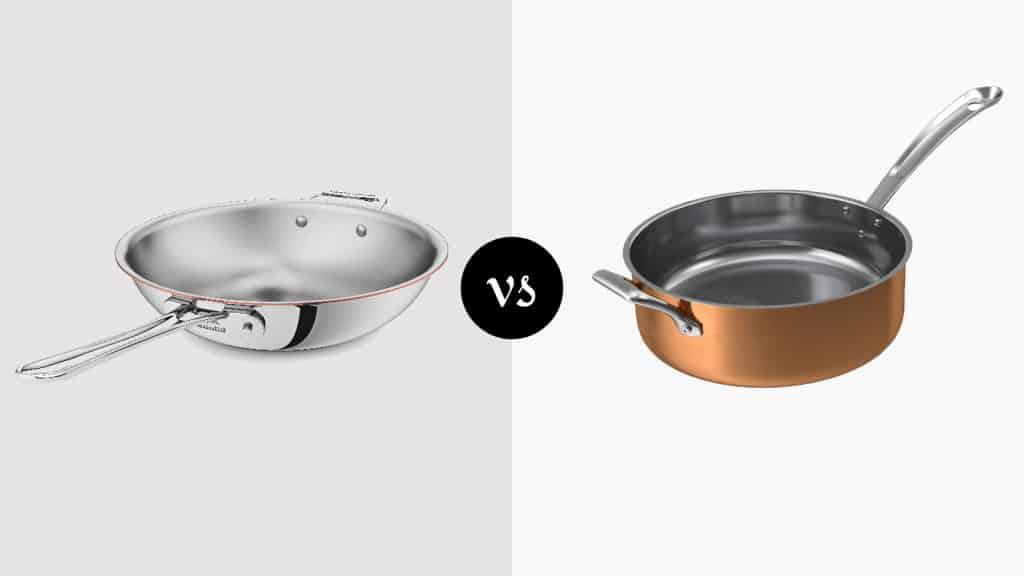
Chefs are maestros of the culinary field. They are experts in the world of cookware thanks to their vast experience with different kinds of utensils and cooking surfaces. They know what cookware is not only suitable but ideal for making each specific dish.
Are you interested in pursuing a career as a chef and have to have the right pan? Or perhaps, you’re wondering what type of cookware professional chefs recommend and why? We’ll be giving you all the information that you need to know about these two must-have pans.
Our comparison of a chef’s pan vs. sauté pan covers the advantages and suitability of each type so that you always know which to choose to guarantee a perfectly cooked meal.
Chef’s Pan Vs. Sauté Pan Comparison
| Chef’s Pan | Sauté Pan | |
|---|---|---|
| Definition | Deep Pan With Sloped Elongated, Wide Mouthed Flat Cooking Surface With Heavy Base | Flat Pan With Deep, Tall Sides And Broad Bottom |
| Uses | Searing, Sautéing, Frying, Stewing, Simmering, Sauces - All Purpose Versatility | Sautéing, Frying, Simmering - Better Suited To Lesser Volumes Of Food Than Chef’s Pan |
| Sizes | 2 - 7 Quart Pans Common | 1 - 7 Quart Pans Common |
| Affordability | More Expensive Than Saute Pan On Average | Generally More Affordable Than Chef’s Pan |
| Considerations | Tapered Flat Pan Surface Limits Surface Area For Searing Large Cuts | Searing Meat Challenging Due To Tall Sides Of Pan |
Chef’s Pan Vs. Sauté Pan
Say goodbye to confusion concerning which is the better pan for any particular use by going through our complete comparison of a chef’s pan and sauté pan.
Chef’s Pan
The number one multipurpose choice for professional chefs will likely become your favorite pan, too, once you’ve become accustomed to its excellent performance. Let’s take a closer look at what a chef’s pan is and how to put it to best use.
What Is A Chef’s Pan?
A chef’s pan is deeper than a saute pan, most often exhibiting sloped sides with a large handle that makes moving it around while cooking a breeze. The bottom of a chef’s pan is usually flat with a largemouth. The wide mouth helps liquid evaporate quicker.
At times, you’ll find straight-sided chef’s pans instead of the rounded design, although they are less common. All chef’s pans feature a tight-fitting cover and heavy ground base that’s extremely responsive to heat.
What Is A Chef’s Pan For?
The sloped or tall sides of a chef’s pan make it simpler to saute, fry, or simmer up a large volume of food. Saucepans and chef’s pans are very similar and are often substituted for each other. A chef’s pan gives you ample space for stirring food ingredients.
Furthermore, the wide mouth makes it the ideal cookware for sauces, risottos, custards, and anything else that requires constant attention and careful temperature control. The heat from the bottom and sides makes a chef’s pan perfect for stews and curries as well.
What Is A Chef’s Pan Made Of?
The majority of affordable chef’s pans are made of heavy gauge, hard-anodized steel that’s nonstick coated. Most high-end chefs’ pans are made from micro-textured mirror-polished stainless steel that often features a nonstick cooking surface atop a 5-layer design.
Chef’s Pan Sizes
There is a wide range of different types and sizes of chef’s pans available in today’s markets. The most common size of chef’s pans includes 2, 3, 4, 5, or 6 quarts.
Affordability
A good chef’s pan doesn’t necessarily need to cost a fortune. Many professional chefs swear by inexpensive but reliable designs. You’ll generally pay slightly more for a good chef’s pan as compared to a saute pan due to its multipurpose versatility.
Considerations
The bottom of a chef’s pan tapers more than a sauté pan, limiting the space for searing. Keep this in mind if you normally cook large cuts of meat. In many cases, a separate pan for searing larger cuts is recommended.
Sauté Pan
The term sauteing means the movement of food particles around the pan during cooking. Sauteing is the best technique for frying food, and it doesn’t need much oil.
Sauté pans are similar to other frying pans but excel at saucier meals or frying off large cuts of meat, seafood, and poultry. Let’s take a closer look at what exactly a sauté pan is and when you should use it.
What Is A Sauté Pan?
Sauté pans are flat cooking surfaces with enough room for sautéing without any risk of messing. The distinguishing feature of a sauté pan is that it has deeper, tall sides and a broad flat bottom. It is the deep edges that make it supremely different from a frying pan.
Just like the chef’s pan, the sauté pan also has a lid making it extremely versatile.
What Is A Sauté Pan For?
A sauté pan, as the name suggests, primarily fulfills sauteing purposes. It is best suited to sautéing veggies and tender meat cuts. The steep sides make the sauté pan highly suited to saucier recipes.
For example, you can easily cook curry in the sauté pan because of the walls of this cookware, but it’s just as useful for searing meat too. Another major advantage of using a sauté pan is that you can place it in the oven and use it to broil, grill, or roast food.
What Is A Sauté Pan Made Of?
You’ll find that the composition of saute pans is largely the same as chef’s pans, just with the distinctive shape difference and difference in dimensions. All saute pans feature a heavy-duty base that’s made from either hard-anodized steel, ceramics, or layered stainless steel.
Sauté Pan Sizes
The most common size of sauté pan is a 4 quart, but 1-quart up to 7-quart pans are also available.
Affordability
A sauté pan is marginally cheaper than the average chef’s pan, but this is relative to the size, brand, and quality.
Considerations
The tall sides of a sauté pan make it very hard to sear meat. Furthermore, broiling meat and poultry are also harder thanks to the distance between the top and bottom of the pan.
What Is The Difference Between A Chef’s Pan And Sauté Pan?
The main difference between a chef’s pan and a sauté pan is that a chef’s pan is deeper and has a base suited to all cooking styles, whereas a saute pan is deep but flatter with a core and cooking surface specifically suited to sauteeing meat and vegetables.
Which Is Best Between A Chef’s Pan Vs. Sauté Pan?
The best type of cookware largely depends on your personal preference and the quality of the cookware on hand. This being said, most professional chefs prefer a chef’s pan over a sauté pan due to its outstanding all-purpose versatility.
With a single pan, you can sear, simmer, stew, fry, grill, and broil, and the performance is near-equal across all applications.
A sauté is generally preferable when you’re sauteeing a massive quantity of food at a time or working with a dish that needs the ingredients to be tossed back and forth in the air frequently.
